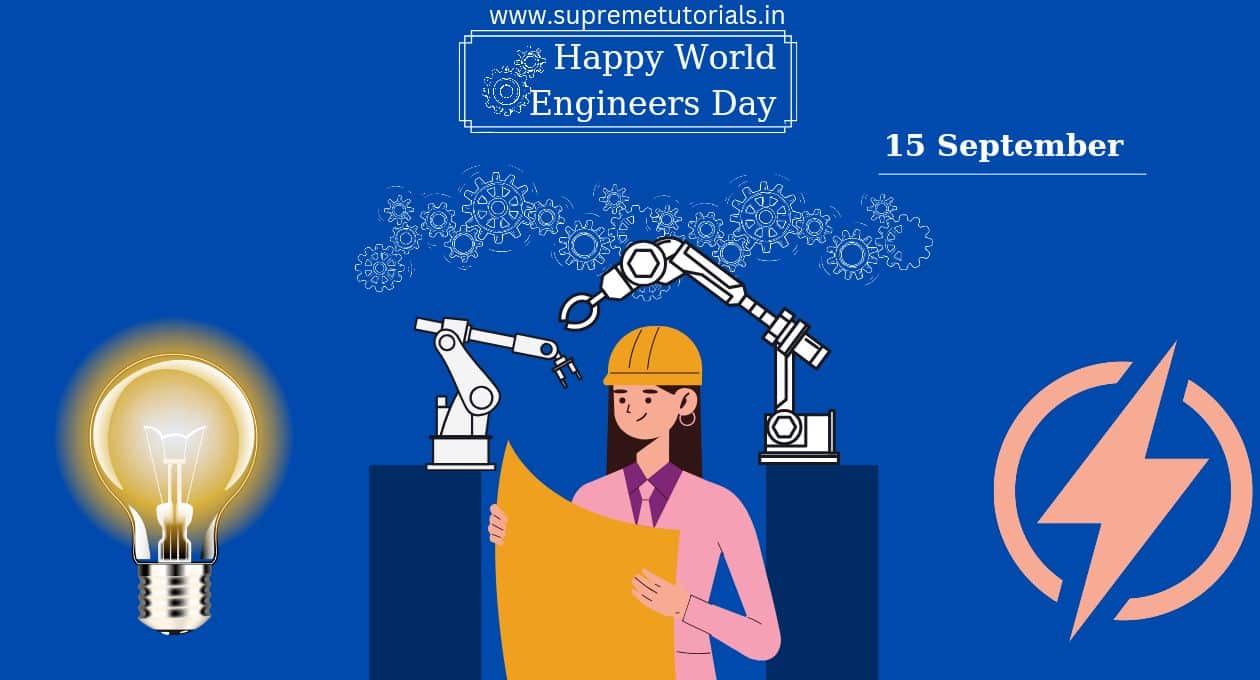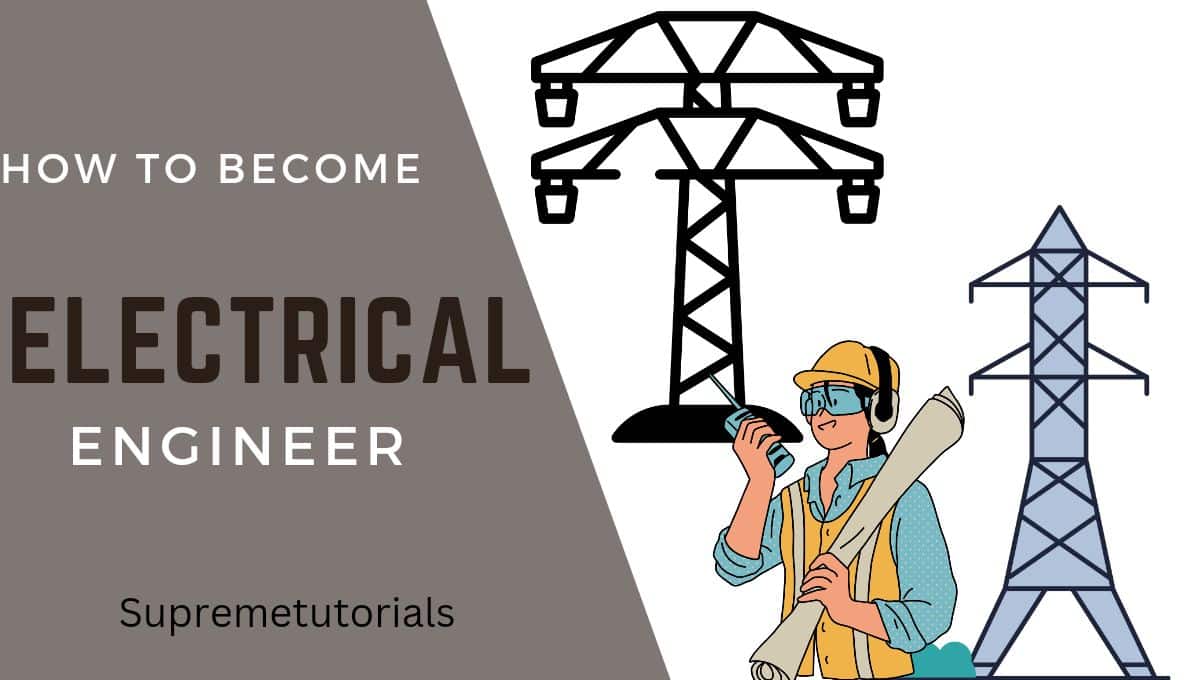Welcome to an electrifying journey through the realm of electrical knowledge! In this TOP 200 Basic Electrical Questions post, we delve into the top 200 basic electrical questions that not only unravel the mysteries of circuits and currents but also spark curiosity and ignite a passion for understanding the fundamental principles that power our modern world. Whether you’re a budding electrical enthusiast or a seasoned professional, these questions and answers are crafted to engage, educate, and empower you on your quest for electrical enlightenment. Let’s dive in and illuminate the pathways of knowledge together!


Top 30 Basic Electrical Questions for Interview
1.What is electricity ?
Ans : Electricity is a general term used for all phenomena caused by electric charge whether static or in motion.
2.What are the types of electricity ?
Ans : There are two types,(1) static Electricity and (2) Current Electricity.
3.What is static electricity ?
Ans : Static electricity means electricity at rest in contradistinction to dynamic or current electricity the effects of which are purely due to the electrostatic field produced by the charge. As it is obtained by rubbing two substance such as glass and silk it is also called frictional electricity.
4.What is current electricity ?
Ans : Current electricity means the electricity in motion the effects of which are due to the flow of electrons in a conductor.
5.What are the types of current electricity ?
Ans : There are two types :- (1) Direct current and (2) Alternating current.
6.What are the different methods of producing electricity ? Give examples.
Ans : The methods are –
i) By means of frictions- Static electricity is produced.
ii) By means of chemical action in cells and batteries.
iii) By means of mechanical driving- Generator produces electricity in two dissimilar methods.
iv) By means of heat – Thermal electricity is produced.
v) By means of lighting effect – Electricity is produced in photo electric cell.
7.What are the sources of electricity ?
Ans : (1)Battery, (2) Generator and (3) Thermocouple.
8.What are the applications of electricity ?
Ans : Heating, Lighting, Welding, Running of Motors, Battery charging, Electroplating, Relays, telephones, Electronic Equipment, etc.
9.What are the effects of electricity ?
Ans : (1) Physiological effect (Electric shock), (2)Heating effect (Lamp, Heater, Fuse), (3)Magnetic effect (Fan, Motor, Electric bell), (4) Chemical effect (Battery charging and Electroplating) and (5) X – Ray effect ( X- Rays).
10.What are A.C. and D.C. ?
Ans : A.C is the abbreviation of an alternating current which flows to and from in a circuit in alternate direction periodically with the variation of its magnitude in regular manner that after reaching a maximum in one direction decreases to zero, finally reversing and reaching a maximum in the opposite direction decreases to zero again the cycle of pulsation being repeated continuously. D.C. is the abbreviation of a direct current which flows in one direction only and which does not have any appreciable pulsation in its magnitude.
11.Where is D.C. used ?
Ans : (1) Battery charging, (2)Electroplating, (3)Electrolysis, (4) Relays, (5) traction motors, (6) Cinema projector.
- Where is A.C. used ?
Ans : (1) House hold appliances, (2) Fan, (3) Refrigerators, (4)Power driving motors. (5)Radio and T.V. Set etc. - How will you judge whether the supply is A.C. or D.C. in premises ?
Ans : By seeing fan and tube light connection.
14.What are conductors ?
Ans : Conductors are those metallic substances which have a large number of free electrons and offer a little resistance to the flow of electricity through them.
- What are insulators ?
Ans : Insulators are those nonmetallic substances which have comparatively very few free electrons and offer enormous resistance that they do not practically allow electricity to flow through them. -
- What materials are generally used as conductors ?
Ans : Copper, Aluminium, Brass, Iron, Phosphor Bronze, Silver, Zinc, Tungsten, Nickel, etc. - What materials are generally used as insulators ?
Ans : Mica, Oil impregnated paper, Vulcanised rubber, Glass, Bakelite, Porcelain, Varnished Cotton, Wood etc.
18.What term is used for comparing the insulation materials ?
Ans : “Dielectric Strength”.
19. What is “Dielectric strength”?
Ans : Dielectric strength is the maximum kilovolts per millimeter which an insulating medium can withstand without breakdown.
20. What are the factors on which the dielectric strength depends ?
Ans : The dielectric strength depends on the following factors – i. Thickness of the specimen,
ii. Size and shape of electrodes used in applying stress,
iii. Form or distribution of the field of electric stress in the material,
iv. Frequency of the applied voltage,
v. Rate and duration of voltage application,
vi. Fatigue with repeated voltage application,
vii. Temperature,
viii. Moisture content and
ix. Possible chemical changes under stress.
What is the effect of heat on insulator ?
Ans : Insulator resistance of most solid dielectric with the possible exception of mica and asbestos is decreased with the rise in temperature and increased when cooled.
What is the effect of moisture and impurities on insulating materials ?
Ans : Moisture and impurities held in the combined form on the insulating material reduce its resistivity, increase the absorption and dielectric loss and finally reduce the dielectric strength.
Why is porcelain glazed for use as outdoor insulators ?
Ans : Outdoor porcelain insulator is glazed to prevent the surface leakage owing to the accumulation of dirt and absorption of moisture. The insulation resistance is also increased by glazing.
What are the properties of a good conductor ?
Ans : A good conductor must have the following properties :-
i) Low resistivity,
ii) Less variation in resistance with temperature,
iii)Good mechanical strength,
iV) Less specific weight,
v) High resistance to corrosion and
vi) High ductility.
What are the properties of a good insulator ?
Ans : A good insulator must have the following properties :-
Non-hygroscopic i.e. it will not absorb moisture,
High resistance to corrosion,
Good mechanical strength,
High insulation resistance and
High breakdown voltage.
What are a semiconductor ?
Ans : A semiconductor is a substance whose resistivity lies in between those of good conductor and insulator. Its resistance decreases with rising temperature and the presence of impurities in contrast to the normal metallic conductor for which normally behaves like an insulator.
Frequently asked Basic Electrical Questions-Answers
2. What are the fundamental laws of electrical engineering?
The fundamental laws include Ohm’s Law, Kirchhoff’s Laws (Kirchhoff’s Current Law and Kirchhoff’s Voltage Law), and Faraday’s Law of electromagnetic induction.
3. Define voltage.
Voltage, also known as electric potential difference, is the measure of electric potential energy per unit charge between two points in an electrical circuit. It is measured in volts (V).
4. What is current?
Current is the flow of electric charge through a conductor, measured in amperes (A), and is the rate of flow of electrons in a circuit.
5. Explain resistance.
Resistance is the opposition to the flow of electric current in a circuit, measured in ohms (Ω), and is influenced by the material, length, and cross-sectional area of the conductor.
R=V/I
6. What is Ohm’s Law?
Ohm’s Law states that the current (I) flowing through a conductor is directly proportional to the voltage (V) across it and inversely proportional to the resistance (R) of the conductor, expressed as I = V / R.
7. Define capacitance.
Capacitance is the ability of a capacitor to store electric charge when a voltage difference exists between its plates, measured in farads (F).
8. What is inductance?
Inductance is the property of an inductor to store energy in a magnetic field when current flows through it, measured in henries (H).
9. Explain AC and DC circuits.
AC (Alternating Current) circuits have a changing polarity and direction of current flow, while DC (Direct Current) circuits have a constant polarity and direction of current flow.
10. What are the types of electrical circuits?
The types include series circuits, parallel circuits, and combination circuits (series-parallel).
11. Define power in electrical engineering.
Power is the rate at which work is done or energy is transferred in an electrical circuit, measured in watts (W), and calculated as P = VI (for DC) or P = VI cos(θ) (for AC).
12. What is the difference between active power and reactive power?
Active power (real power) is the actual power consumed by the load and performs useful work, while reactive power is the power oscillation between the source and the load due to inductance and capacitance.
13. Explain three-phase power systems.
Three-phase power systems consist of three alternating currents with a phase difference of 120 degrees, commonly used in industrial and commercial applications for efficient power distribution.
14. Define frequency in electrical engineering.
Frequency is the number of cycles per second in an AC waveform, measured in hertz (Hz), and determines the rate of change of current or voltage.
15. What is an electric circuit?
An electric circuit is a closed path or loop through which electric current flows, consisting of a power source, conductors, loads (such as resistors, capacitors, and inductors), and switches.
16. What are the different types of electrical loads?
The types include resistive loads (resistors), capacitive loads (capacitors), inductive loads (inductors), and mixed loads (combination of resistive, capacitive, and inductive elements).
17. Define rectification in electrical engineering.
Rectification is the process of converting AC (Alternating Current) into DC (Direct Current) by using rectifiers, which allow current to flow in one direction only.
18. What is a diode?
A diode is a semiconductor device that allows current to flow in one direction and blocks it in the opposite direction, commonly used in rectifiers and electronic circuits.
19. Explain the working principle of a transformer.
A transformer works based on electromagnetic induction, where alternating current in the primary coil induces a changing magnetic field, which then induces voltage in the secondary coil, with the ratio of turns determining voltage transformation.
20. Define short circuit and open circuit.
A short circuit occurs when a low-resistance path is created between two points in a circuit, causing excessive current flow, while an open circuit is a break or discontinuity in the circuit, preventing current flow.
21. What is the purpose of fuses and circuit breakers?
Fuses and circuit breakers protect electrical circuits and equipment from overcurrent and short circuits by interrupting the flow of current when predetermined limits are exceeded.
22. Explain the concept of grounding in electrical systems.
Grounding involves connecting electrical equipment and systems to the earth or a conductive body to ensure safety, stabilize voltages, and protect against electrical faults.
23. Define insulation resistance in electrical engineering.
Insulation resistance is the resistance offered by the insulation material of a conductor or electrical equipment to the flow of current, indicating its ability to prevent leakage or short circuits.
24. What are the factors affecting the resistance of a conductor?
Factors include material type, length of the conductor, cross-sectional area, temperature, and presence of impurities or defects.
25. Explain the concept of series and parallel connection of resistors.
In series connection, resistors are connected end-to-end, increasing the total resistance, while in parallel connection, resistors are connected across the same voltage source, reducing the total resistance.
26. What is a multimeter used for in electrical engineering?
A multimeter is a versatile instrument used to measure voltage, current, resistance, continuity, and other electrical parameters in circuits and electronic devices.
27. Define the term conductor in electrical engineering.
A conductor is a material or substance that allows the flow of electric current due to the mobility of free electrons, such as copper, aluminum, and silver.
28. What is the role of an electric motor?
An electric motor converts electrical energy into mechanical energy, producing rotational motion, and is used in various applications such as industrial machinery, appliances, and vehicles.
29. Define the term semiconductor in electrical engineering.
A semiconductor is a material that has electrical conductivity between that of a conductor and an insulator, commonly used in electronic devices like transistors, diodes, and integrated circuits.
30. What is the function of a capacitor in an electrical circuit?
A capacitor stores electrical energy in an electric field, releasing it when needed, and is used for filtering, energy storage, timing circuits, and power factor correction.
31. Explain the concept of impedance in AC circuits.
Impedance is the total opposition offered by a circuit to the flow of alternating current, consisting of resistance, inductance, and capacitance, and is measured in ohms (Ω).
32. What is the difference between analog and digital signals?
Analog signals are continuous and vary in amplitude or frequency or time, while digital signals are discrete and represent information using binary digits (0s and 1s).
How does an electric generator work?
An electric generator converts mechanical energy into electrical energy through electromagnetic induction, where a rotating coil or magnet within a magnetic field generates an electric current.
Define insulation in electrical engineering.
Insulation refers to materials or coatings used to prevent the flow of electric current between conductors or electrical components, ensuring safety and preventing short circuits.
What are the different types of electrical cables?
The types include power cables (for transmitting electrical power), control cables (for transmitting control signals), and communication cables (for data transmission).
Explain the concept of power factor in electrical engineering. | Power factor is the ratio of real power (active power) to apparent power in an AC circuit, indicating the efficiency of power usage and the relationship between voltage, current, and power.
What is the role of a circuit breaker in electrical systems?
A circuit breaker interrupts the flow of current in an electrical circuit during overloads, short circuits, or faults, protecting equipment and preventing electrical hazards.
Define electric potential in electrical engineering.
Electric potential (voltage) is the electric potential energy per unit charge at a point in an electric field, measured in volts (V), and determines the force experienced by charges.
What is the significance of Kirchhoff’s Laws in electrical circuits?
Kirchhoff’s Laws (Kirchhoff’s Current Law and Kirchhoff’s Voltage Law) are fundamental principles used to analyze and solve complex electrical circuits by applying conservation of charge and energy principles.
Explain the concept of electrical grounding in buildings.
Electrical grounding involves connecting electrical systems and equipment to the earth or a conductive body to prevent electric shocks, dissipate static charges, and ensure equipment safety.
What is the role of a transformer in electrical power distribution?
A transformer is used in electrical power distribution to step up (increase voltage) or step down (decrease voltage) AC voltages for efficient transmission, distribution, and utilization of electrical energy.
Define electric current density in electrical engineering.
Electric current density is the amount of electric current flowing through a conductor per unit area, measured in amperes per square meter (A/m²), and indicates the distribution of current within the conductor.
How does a semiconductor diode function?
A semiconductor diode allows current to flow in one direction (forward bias) and blocks it in the opposite direction (reverse bias), acting as a rectifier in electronic circuits and devices.
What is the role of an electrical relay?
An electrical relay is an electromagnetic switch used to control the flow of current in electrical circuits, based on input signals or conditions, and is used for automation, protection, and control purposes.
Define the term electromotive force (EMF) in electrical engineering.
Electromotive force (EMF) is the electrical potential difference or voltage produced by a source such as a battery, generator, or cell, driving current flow in a circuit.
What are the characteristics of a superconductor?
Superconductors exhibit zero electrical resistance below a critical temperature, allowing current to flow without energy loss, and are used in high-efficiency electrical and magnetic applications.
Explain the concept of electrical insulation resistance testing
Electrical insulation resistance testing measures the resistance of insulation materials or components to current flow, ensuring their integrity, safety, and reliability in electrical systems.
What is the function of an electrical switch in circuits?
An electrical switch controls the flow of current in a circuit by opening or closing the circuit path, allowing devices to be turned on or off, and is used for control and safety purposes.
Define the term electrical conductivity in materials.
Electrical conductivity is the ability of a material to conduct electric current, influenced by factors such as material type, temperature, and impurities, and is measured in siemens per meter (S/m).
What is the role of an electrical engineer in the design and maintenance of electrical systems?
Electrical engineers design, analyze, and oversee the implementation, operation, and maintenance of electrical systems, ensuring efficiency, safety, and compliance with standards and regulations.

What are the different types of semiconductors ?
Ans : There are two types of semiconductors :
i) Intrinsic semiconductors in pure form and
ii)Extrinsic semiconductors with added impurities.
Extrinsic semiconductors are sub divided into two types depending upon the type of impurity added such as (1)N-type and (2) P-type.
Give some examples of semiconductors ?
Ans : Germanium (Ge), Silicon (Si), Selenium (Se), Carbon (C) etc.
Where are semiconductors used ?
Ans : Semiconductors are generally used in electronic devices such as Radio, Television I.C.,V.C.R. etc.
What is resistance ?
Ans : Resistance is the property of a substance which opposes the flow of electricity through it.
How are resistances classified ?
Ans : From the point of measurement resistances are classified as follows :-
i)Low resistances – All resistances of the order of 1 ohm or less.
ii)Medium resistances – Resistances ranging from about 1 ohm upwards to about 100000 ohms.
iii)High resistances – Resistances of 100000 ohms and above.
What is the unit of resistance ?
Ans : The unit of resistance is ‘ohm’.
What is resistor ?
Ans : Resistor or Rheostat is a device whose chief property is to oppose or resist the flow of electricity.
On what factors does the resistance of a conductor depend ?
Ans : Resistance of a conductor depends on its (1)Length, (2)Cross section, (3) Resistivity i.e. nature and composition of conductor material, (4) Temperature and (5) Nature of the current flowing through the conductor.
What is the specific resistance of a conductor ?
Ans : The specific resistance or resistivity of a conductor is the resistance offered by unit metre cube of the material of that conductor.
What is the unit of specific resistance ?
Ans : Ohm-meter.Type equation here.
What is the relation among resistance, length, and cross sectional area ?
Ans : Resistance ∝ Length/(Area of cross section) Resistance varies, directly proportional to the length and inversely proportional to the cross section.
What is the effect of heat on resistance ?
Ans : Resistance is increased with the rise in temperature end decreased when cooled.
What is temperature coefficient of resistance ?
Ans : Temperature Coefficient of resistance is defined as the change in resistance per degree change of temperature per ohm of resistance.
Define Ohm’s law.
Ans : Ohm’s law states that at the constant temperature, the current flowing in a circuit is directly proportional to the potential difference across the circuit.
What fundamental relation does ohm’s law express ?
Ans : Ohm’s law gives the relation among the voltage, current and resistance in a circuit and expressed by the equation, I = V/R .
State three equations of Ohm’s law.
Ans : I = E/R, R = E/I, and E =I.R. Where I is the current flow in amperes, R is the resistance in ohms and E is the E.M.F. in volts.
Can you apply ohm’s law to all types of electrical conductor ?
Ans: No. Ohm’s law can be applied only in the cases of conductor through metals and in electrolytic conduction. It can not be applied in the cases of conduction through ionized gases or semiconductors.
A bulb is connected to a battery of F.M.F. 10V and the current is found to be 0.01 A. When the bulb is connected to 220V mains, the steady current is 0.05A. Explain this apparent disagreement with ohm’s law.
Ans: It is due to the difference in temperature of the filament of the bulb in the two cases. The temperature of the filament is more when the bulb is connected to 220V main and thus the resistance also increases. Hence we have the deviation from the law.
What are the limitations of Ohm’s law ?
Ans : Ohm’s law is not applicable to non ohmic conductors like vacuum tubes, discharge tubes and semiconductors.
What is an electric circuit ? What are its types ?
Ans : Electric circuit is a complete traversed path for the flow of electric current which consists of source of supply, connecting wires, switches and load resistances. There are three types of circuit, (a) Closed circuit, (b) Open circuit and (b) Short circuit.
What do you mean by closed circuit ?
Ans : Closed circuit is a complete electric circuit through which current will flow when voltage is applied.
What do you mean by open circuit ?
Ans : A break in a circuit not having a complete path or circuit for the flow of electric current is said to be open circuit or break circuit.
What do you mean by short circuit ?
Ans : An accidental connection of negligible resistance joining two wires of different polarity of a circuit, through which nearly all the current will flow, is said to be short circuit.
What are the combinations of resistances ?
Ans : There are three combinations of resistances : – Series combination (2) parallel combination and (3) series parallel mixed combination.
What is a series circuit ?
Ans : Series circuit is a circuit in which the same current flows through all the devices.
What are the characteristics of a series circuit ?
Ans : The followings are the characteristics of a series circuit : The same current passes through all the resistances in series circuit. Total voltage drop across the combination is the sum of the voltage drop across each resistance. The total or equivalent resistance which is the sum of the component resistance increases.
What is a parallel circuit ?
Ans : the Parallel circuit is a multiple circuits where the current divides and part flows through each device connected to it.
What are the characteristics of a parallel circuit ?
Ans : The following are the characteristics of a parallel circuit :- The total current divides and is the sum of the currents flowing through each resistance. Same voltage is applied across each resistance. The total or equivalent resistance is less than the least component i.e decreases.
What will be the total resistance when three equal resistances are connected in (a) Series and (b) parallel ?
Ans : (a) In series, total resistance, R_eq = R+R+R = 3R. i.e. three times of each resistance. (b) In parallel : 1/R_eq = 1/R + 1/R + 1/R = 3/R or R_eq = R/3 i.e. total resistance is equal to 1/3rd of each resistance.
What is conductance ?
Ans : It is the property of a material for easy conducting the current. Its unit is mho.
What are (a)E.M.F, (b) Potential Difference & (c) Current ?
Ans : (a) Electromotive force (E.M.F) is that force which creates the pressure to cause a flow of electrons through a conductor in any closed circuit. Potential difference between two points in a circuit is the electrical pressure or voltage required to drive the current between them. Current is the rate at which the electrons flow in any conductor.
1. What is electrical engineering?
Electrical engineering deals with the study, design, and application of electrical systems, components, and devices.
What is voltage ?
Ans : Voltage is the potential, potential difference or electromotive force of a supply of electricity measured in volts.
What are the units of E.M.F, Potential Difference and current ?
Ans : The unit of E.M.F and the potential difference is volt. and the unit of current is ampere.
What is voltage drop ?
Ans : Voltage drop or potential drop is the diminution of potential along a conductor or in an apparatus through which a current is passing against its resistance.
Watch Video lecture on Basic Electrical Questions








Lovely site! I am loving it!! Will come back again. I am taking your feeds also.
Do you mind if I quote a few of your articles as long as I provide credit and sources back to your website? My website is in the exact same niche as yours and my users would truly benefit from some of the information you present here. Please let me know if this alright with you. Many thanks!
You made some decent points there. I did a search on the subject matter and found most persons will consent with your website.
Excellent blog here! Also your website loads up fast! What web host are you using? Can I get your affiliate link to your host? I wish my web site loaded up as fast as yours lol
Glad to be one of several visitants on this awe inspiring internet site : D.
Hey there! Someone in my Facebook group shared this site with us so I came to look it over. I’m definitely enjoying the information. I’m bookmarking and will be tweeting this to my followers! Terrific blog and excellent design.
This web site is my breathing in, rattling fantastic style and perfect subject matter.
Some really interesting info , well written and broadly speaking user friendly.
I really appreciate this post. I¦ve been looking all over for this! Thank goodness I found it on Bing. You’ve made my day! Thanks again
I am glad to be a visitant of this perfect blog! , appreciate it for this rare information! .
I don’t think the title of your article matches the content lol. Just kidding, mainly because I had some doubts after reading the article.
I like this site so much, saved to favorites. “Respect for the fragility and importance of an individual life is still the mark of an educated man.” by Norman Cousins.
I like this web blog very much, Its a real nice place to read and receive information.
I like your writing style truly enjoying this site.
Your article helped me a lot, is there any more related content? Thanks!
Thank you for your sharing. I am worried that I lack creative ideas. It is your article that makes me full of hope. Thank you. But, I have a question, can you help me?
Thanks for sharing. I read many of your blog posts, cool, your blog is very good. https://accounts.binance.info/register?ref=P9L9FQKY